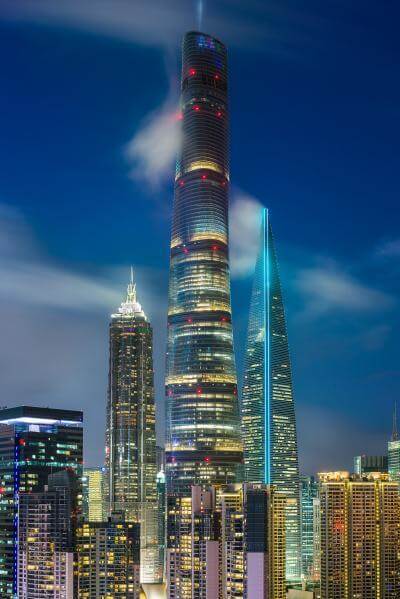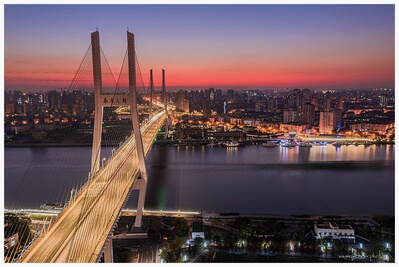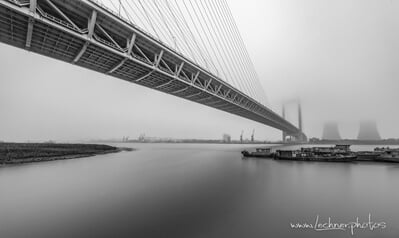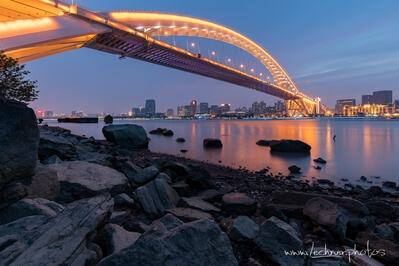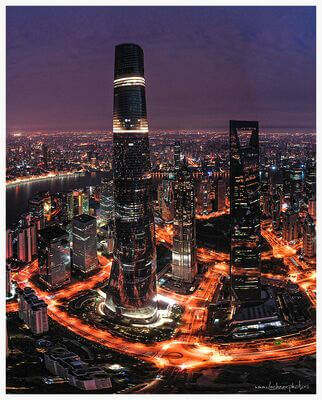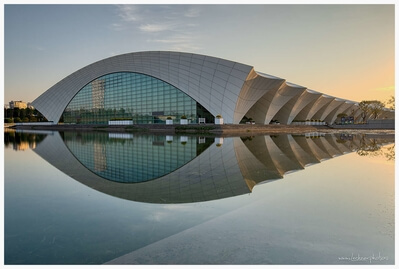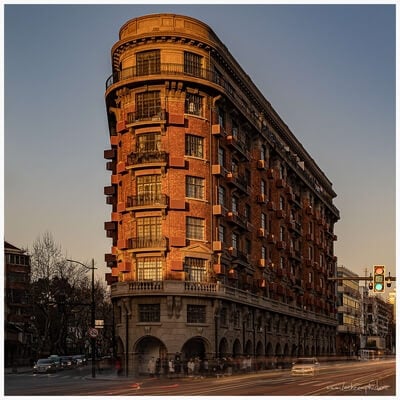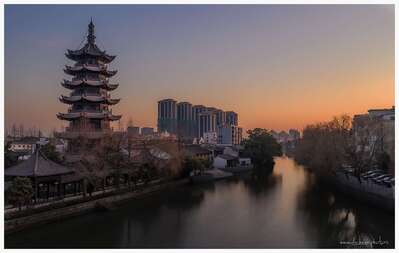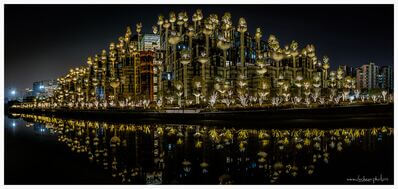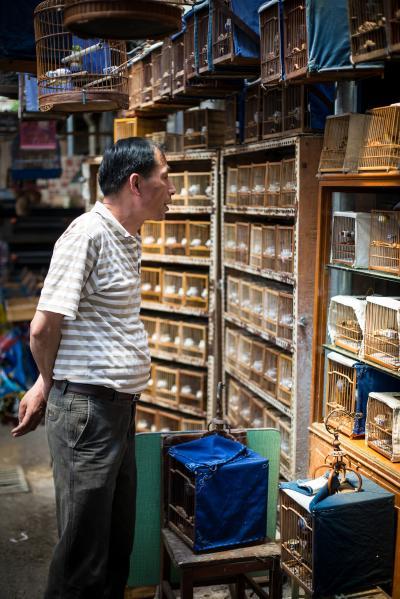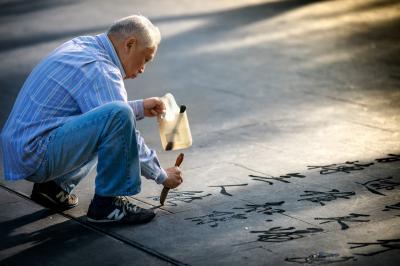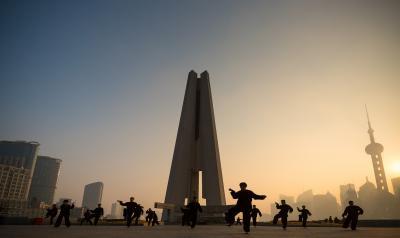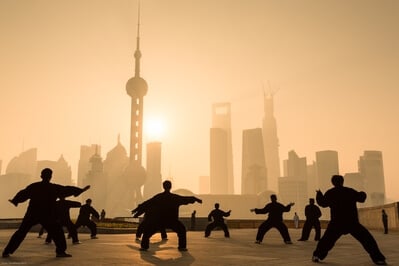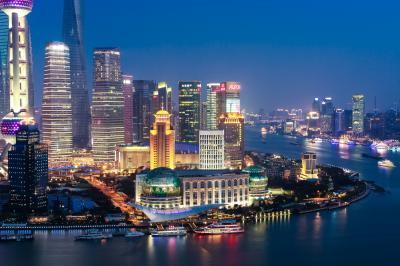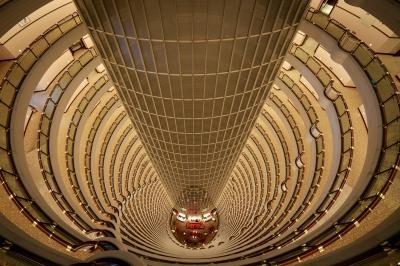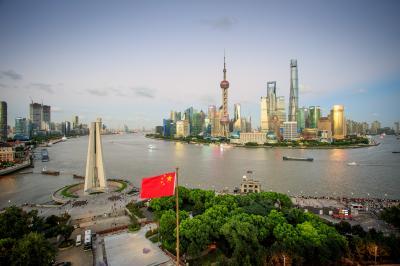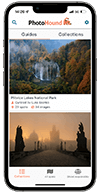The photography guide to
 Shanghai
Shanghai
Shanghai photography guide
Our contributors have added 37 photo spots to this Shanghai photo guide. Have you discovered an amazing new location in Shanghai?
Introduction
Shanghai, home to more than 24 million people, is the world’s largest city proper. Initially born of the opium trade, it later emerged as a freewheeling trading port for the major imperial powers of late nineteenth and early twentieth centuries.
The city’s colourful and decadent past, which reached its peak in the 1930s, can still be discerned in both the physical and spiritual makeup of today’s metropolis. It remains a brash, confident, international and open-minded city. And beyond the garish neon-lit skyscrapers and rampant construction, the city has retained many of its art deco buildings, shikumen lane houses, as well as the elegant tree-lined lanes of the Former French Concession.
Shanghai is a relatively easy city to travel in by Chinese standards. After decades of slumber following the end of the civil war, it has quickly regained its status as the country’s financial hub and its most international city. The foreign traveller generally does not get as much as a second glance. Take the metro in the morning and you will find westerners in suits going to work alongside the locals. And home comforts are never far away: international food is ubiquitous, and the high streets are lined with household names. Signs and maps are in English, and there’s a reasonable chance of encountering English speakers in most situations.
For photographers, the city offers the ultimate range of subject matter and juxtapositions. Beneath the space age skyline lies a vast warren of crumbling lane houses and tree-lined streets littered with art deco buildings, all in various states of repair. As with many cities, it is the human element which is most fascinating, and this is particularly true in Shanghai. The rapid pace of development has left stark contrasts: between rich and poor, old and young, old and new. Shanghai was thankfully among the first cities in China to start taking preservation of its historical buildings seriously, leaving it full of architectural gems. It also retains much of its former European street layout, including tree lined avenues, making it as quaint in some parts as it is garish in others.
Anyone with a bit more time on their hands may also want to venture out of town. The Yangtze Delta region is scattered with so-called “water towns” built around canal networks. These offer a picturesque and slower-paced view into ancient China, though many are now flooded with tourists and neon signage. Finding a quiet spot requires getting a bit off the beaten track, which is thankfully not too difficult to do. A handy guide can be found here:
https://www.shanghaiexpat.com/news/shanghai-water-towns-complete-rundown
Alternatively, those looking for a slice of the bizarre might want to look at one of the nine faux European towns surrounding Songjiang University Town. Take a walk down “Oxford Street” in the almost entirely abandoned (but recently built) “Thames Town”, a “British-themed” village complete with a Winston Churchill statue. Further afield, a two-to-three day round trip from Shanghai takes you out to the Yellow Mountain, which offers something totally different for the photographer: landscapes which look as if they’ve jumped out of the mural at your local Chinese restaurant. The nearby picturesque historical villages and bamboo groves formed the setting of the famous film Crouching Tiger Hidden Dragon.
While Shanghai and the surrounding areas contain a number of “must see” destinations and “set piece” shots, part of the joy of photographing Shanghai is in the ever-changing and random nature of the city. So while this guide offers a good starting point for planning the main attractions, as well as - hopefully! - some lesser-known ones, make sure to allow some time to wander freely around the streets and take in the atmosphere. Be prepared for anything. There is never a dull moment for the photographer.
And be warned: any skyline photo has a lifespan of only a few years, before a new skyscraper shoots up and renders it history. So while the best effort has been made to keep this up-to-date, doing so is all but impossible for one person in a city this size. So if you arrive at one of the locations in this and find it has been bulldozed to make way for a new mall or elevated road, please let me know!
Please note: You may find the occasional discrepancy between co-ordinates provided and how they appear on maps. This is an issue with the map providers and unfortunately we have no control over it. We have found that using Google maps in Terrain mode seems to work best and you can be assured that the co-ordinates provided by the author photographer are accurate. To use maps in Terrain mode; select a spot, scroll down to the location map, click on the co-ordinates and select Open in Google Maps. Tap the map layer icon (a diamond tile) and choose Terrain view. We will continue working with the map providers to find a better solution for this issue and will update the app accordingly when we can. If you are familiar with Baidu Maps, this also seems to work well if you are ok with all street names and locations appearing in Chinese!
Please refer to the FAQ's on our website for a more detailed explanation of how best to use map technology for this guide.
Most popular Shanghai photo spots
Events
On the Western New Year, Longhua Temple holds celebrations including dragon and lion dances. However, Chinese New Year which falls in late January or February is really worth avoiding if you are visiting Shanghai. The celebration is more of a family affair than a large public one yielding any photographic opportunities, and you will not only find yourself freezing to death, but also struggling for hotel rooms and fighting your way into the attractions with the millions of domestic tourists. The city’s enormous migrant population (larger than the entire population of London) also returns home, leaving many restaurants and bars unable to continue operating. The authorities recently banned fireworks in the city centre, which has also removed the one element of photographic potential! The Lantern Festival, which falls just over two weeks into the new lunar year can be a colourful - if busy - time to visit Yu Garden.
The other big holiday in China is the National Day, falling on 1st October. While the week following this is worth avoiding like the plague, if you travel just before this date the city fills with red Chinese flags.
Top Picks
Wake up early to sample Shanghai at its best, and also at its quietest. Old habits die hard among the older residents, and the parks and open spaces will be full of people practicing tai chi and water calligraphy, or flying ornate kites. The Bund or the Xiangyang and Fuxing parks in the Former French Concession area are both great for this, and are highly atmospheric in the mornings. Watching a hazy sunrise over the skyscrapers from the Bund is a must-do while in Shanghai. Generally the city is in full pelt by 8am, so early mornings make for a pleasant change of pace.
During the day, it is hard to beat a stroll around the former French Concession during the spring or autumn months, when the tree canopies create shaded tunnels with mottled patches of sunlight seeping through onto the streets below. Other favourites include the derelict, and also rapidly disappearing Old Town, where life spills out into the streets, and the downtown areas just behind the Bund and around East Nanjing Road, which give a glimpse into the more upmarket areas of old Shanghai.
Shanghai is a city that looks amazing from above. Around sunset, hit one of the numerous rooftop bars for a view of the Lujiazui skyline in Pudong as the lights come on. Vue bar at Hyatt on the Bund is a great place to start for panoramic views of the city. This is always on my first day itinerary when friends or family come to visit.
If time allows, squeeze in a three day trip to the Yellow Mountain. It is incredibly touristy, and even busier since connected to the high speed rail network, but also staggeringly beautiful, and the crowds will not impact your photography.
Travel
The best times of year are spring and autumn. Winters are damp and cold, and the pollution is often much worse, leaving the city in a dull, colourless haze - particularly since the trees lack foliage. July and August are unbearably hot - sometimes hitting 40 degrees - and also humid. Always make sure to avoid public holidays: 1.3 billion people holidaying simultaneously puts a real strain on infrastructure and accommodation availability. During Chinese New Year in winter the largest human migration in the world takes place, and as much as 40% of Shanghai’s population leaves the city.
http://www.chinahighlights.com/festivals/china-public-holiday.htm
Most people arrive at Pudong International Airport (if you have the option, however, try to fly into Hongqiao airport - smaller, better connected and far less busy). From Pudong airport a taxi to central Shanghai (Puxi side) should not cost more than around 200 yuan during the day (a little more at night). Always take one from the official rank and ignore the touts in the arrival hall. The metro can be taken all the way into town, and there are also buses - both are cheaper but far slower. The quickest route is to take the magnetic levitation train, though this ends at Longyang Road - a fairly useless terminus for most travellers, meaning a taxi or metro from here will usually be required. Taxi drivers waiting at the Maglev terminal are notorious for ripping off unwitting tourists. It should not cost more than 100 yuan to central Shanghai from here.
Public transport is cheap and efficient, if utilitarian in design. The metro network puts most cities to shame, and is easy to navigate, with signs and ticket machines all offering English translations. This will be the best way to get around. A single ride within the city costs 3-4 yuan, but pick up a rechargeable transportation card, which allows you to tap in and out of the ticket gates rather than fumble for coins each time you take a ride. This requires going to the service centre at a metro station, asking for a “jiaotong ka” and leaving a refundable 20 yuan deposit. There are also three day passes available for 45 yuan.
Shanghai’s low-rise, “European” street layout also makes it a great city for walking around by foot. Being situated in a delta region, Shanghai is also flat as a pancake, making cycling a great choice to get around. A range of rental bike schemes makes finding one even easier. Despite the somewhat aggressive driving you might have witnessed on your ride in from the airport, motorists are accustomed to cyclists and it remains relatively safe to travel on two wheels - especially since the ballooning of rental bike schemes, which has flooded the more popular tourist areas with cyclists. However, as a general rule remember that small gives way to big in Shanghai’s slightly Darwinian unofficial highway code.
Taxis are cheap, but drivers generally will not speak any English, nor be able to read addresses unless in Chinese characters. A common way to direct them is to give the name of the closest crossroads by giving two road names in succession. The word for street is lu (pronounced loo). So the crossroads of Fuxing Road and Huaihai Road would be: foo-shing-loo, Huai-hai-loo. An excellent website, which also has a smartphone app, is Smart Shanghai, which includes taxi printouts of addresses for common attractions and restaurants.
The city is safe from crime, with CCTV and public security people in various guises omnipresent. Pickpockets may be an issue but certainly no more so than in any other city, and it is unusual they would target foreigners. You’re more likely to be tricked than mugged: stay clear of anyone offering you a trip to a tea house or art gallery. One thing to watch out for is cars jumping traffic lights - sometimes at high speed. They do not always give way for pedestrians when turning through a light either: always check carefully before crossing.
One frustration most visitors have is with the internet restrictions. All Google services, including maps and Gmail, are blocked. Facebook, Twitter and Instagram are also blocked. If you require these, either use data roaming off your home network (which for some reason seems unrestricted) or install a VPN before you leave your home country. Bear in mind the Google maps is not properly updated and the public transport timings are completely wrong. Make sure you have downloaded this guide to your phone before you travel and whilst you have a good wifi connection.
Links
Smart Shanghai
Explore more photo spots in China
If you want to explore beyond Shanghai, we have 63 photo spots that you can visit in China.
Curated By
Oscar Tarneberg Author
Jules Renahan Team
We hope you enjoy this guide to photographing Shanghai - don't forget to share your images on PhotoHound and tag us on social media using hashtag #photohound
